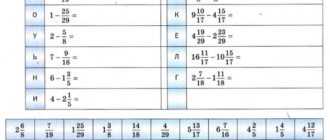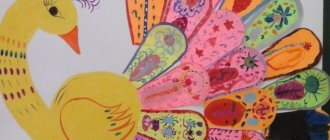Literacy minutes 4th grade
Literacy Minutes NAME________________
Find and correct spelling errors. Date of___________
The cold earth has arrived. A light, quick snowfall falls. Yulia put on a fur coat, a hat, took on warm mittens and walked around the yard.
Found errors_________________
Didn't fix it_____________________
Find and correct spelling errors. Date of___________
A cold wind blew. The birds became silent. there was a thunderstorm. the branches of the trees are cracking. Heavy raindrops are knocking on the leaves.
Found errors_________________
Didn't fix it_____________________
Find and correct spelling errors. Date of___________
A strong cold struck. Here are the snigiri flocking to our pockets. The birds began to peck at the bread crumbs and simen.
Found errors_________________
Didn't fix it_____________________
Find and correct spelling errors. Date of___________
Tanyusha had a fluffy little red cat. The girl fed him milk and meat. She often went for walks with him.
Found errors_________________
Didn't fix it_____________________
Find and correct spelling errors. Date of___________
Sucks Ivan Pitrovich gave us a small fluffy rabbit. we named him Ushastik. At first, Ushastik was afraid of us and didn’t want to eat.
Found errors_________________
Didn't fix it_____________________
Find and correct spelling errors. Date of___________
The roots anchor the tree to winter. Ani give the trees food. The roots serve as a support against blizzards and wind. The trunk bears branches and branches. He's passing the juice. Twigs and branches bear leaves, flowers and branches. They drink the juice greedily.
Found errors_________________
Didn't fix it_____________________
Find and correct spelling errors. Date of___________
It's drizzling and blizzarding in Dwara. The wind whirls the snow. The hanging birds of galos fell silent. The woodpeckers are just knocking on the square of trees. Bunny slides flutter through the snow.
Found errors_________________
Didn't fix it_____________________
Find and correct spelling errors. Date of___________
Forest in autumn.
How sweet the forest is in late autumn! The damp winter is elastic under its skin. The tall dry blades of grass do not move. Long threads glisten in the soda. The heart breathes calmly. You walk along the edge of the forest and keep an eye on the dog.
Found errors_________________
Didn't fix it_____________________
Find and correct spelling errors. Date of___________
Cloud.
The day was sunny. The boys were playing in the meadow. Their voices sounded joyful. But then the sun disappeared. Lightning flashed. Thunder roared behind. The guys started running towards the lady.
Found errors_________________
Didn't fix it_____________________
Find and correct spelling errors. Date of___________
Unified spelling regime in elementary school
- The procedure for maintaining and preparing notebooks
- Design of inscriptions on the covers of notebooks
- Preparation of written works in the Russian language
- Organization of work to develop calligraphy skills
- Preparation of written works in mathematics
- Journaling in elementary school
The procedure for maintaining and preparing notebooks
• All entries in notebooks should be written in neat calligraphic handwriting. • Use a ballpoint pen with purple (blue) ink. • All underlining and drawings of geometric shapes are done with a simple pencil.
In elementary school, students have notebooks for completing all types of educational and testing work in basic subjects.
Mathematics and Russian language:
- Notebooks No. 1 and No. 2 (for current work)
- Notebook No. 3 (for tests.)
Presentation and composition refer to works of a creative nature and are signed as notebooks for creative works.
It is allowed to have notebooks for literary reading, in which creative types of work are performed (essays, drawings, plans for works, definitions of literary concepts, etc.) For lessons in the knowledge of the world, it is possible to use notebooks on a printed basis, but more often in practice, students have ordinary workbooks. In accordance with program requirements, notebooks on music, foreign languages, elective courses, etc. are allowed. Notebooks on labor, fine art, physical education, life safety, and traffic rules are not required.
Design of inscriptions on the cover of notebooks
The notebooks of 1st and 2nd grade students are signed by the teacher. Notebooks for students in grades 3-4 are signed by the students themselves under the guidance of the teacher. It is not necessary that the notebooks be signed in the same handwriting.
The inscriptions on the covers must be drawn up in a uniform form, in compliance with calligraphy standards.
The preposition “by” is written on the same line with the name of the item. Class numbering is written in Arabic numerals. Last name and first name should be written in the genitive case. First write the last name and then the full name.
Work on mistakes in workbooks. Daily work on mistakes should be a holistic system, the effectiveness of which can be seen in improving the quality of training.
In elementary school, notebooks are checked daily without fail. Test papers are checked for the next lesson. Notebooks No. 3 are shown to parents and given to them at home. But they are kept in the classroom until the end of the school year.
Students' work is checked by the teacher using red ink. Assessment of written current and test work is carried out in accordance with accepted assessment standards.
Preparation of written works in the Russian language
After class and homework, two lines should be indented (we write on the third).
When creating a red line, an indentation to the right of at least 2 cm (two fingers) is made. Compliance with the red line is required from the first grade when preparing texts and starting a new type of work. Lines are not skipped during operation.
A new page starts from the top line and is added to the end of the page, including the last line.
On the left, when creating each line, no more than 0.5 cm is removed from the edge. On the right, the line is added to the end. The use of transfer rules is mandatory. Unreasonable presence of empty spaces on a line is not allowed.
The date of writing the work in the Russian language (and mathematics) is recorded in the center of the working line.
In the first grade, during the period of literacy training, the date is recorded by the teacher or students in the form of a number and the initial letter of the name of the month: 1 day.
At the end of this period, the date is written in full: December 1.
From the 3rd grade (from the 2nd half of the year) it is allowed to write numerals in words in the date record: the first of December.
The title of the work is recorded on the next working line (without a gap) in the center and is formatted as a proposal.
For example:
Classwork. Homework. Work on mistakes.
The variability of the work is recorded on the following line in the center or in the margins (short form of recording): 1-option. 1st century (written in Roman numerals)
The word exercise is written in full from 3rd grade, starting from the third quarter. The numbers of exercises performed in notebooks are indicated when they are complete. If the exercise is not performed completely, then it is not indicated. A short and full form of entry is allowed (in the center of the line).
Sample:
Exercise 234. Exercise 234.
In work that requires writing in a column, the first word is written with a capital letter. Punctuation marks (commas) are not used.
For example:
Wind east sand
When performing this type of work on a line, the first word is written on the red line, with a capital letter, separated by a comma.
For example: Wind, east, sand.
When performing various types of analysis, compliance with accepted norms of word abbreviations and term designations is required. The word is shortened only by consonants:
deaf-voice, voiced-voice, consonant-consonant, hard-tv., noun-noun. adjective verb-ch. preposition-pr. masculine gender feminine middle gender Past tense - past. Present time - present. Future tense - will. Singular number Plural - plural. The names of the cases are indicated by a capital letter (Im.p. R.p. D.p. V.p. T.p. P.p.)
It should be determined that the notations above words should be done with a pen, as well as with a simple sharpened pencil. All underlinings are made along the ruler only with a pencil. Some types of work can be carried out without a ruler, if children have developed skills in working with a pencil. When preparing written types of analysis, you should comply with the requirements of the proposed samples. Draw students' attention to the placement of dashes, periods and commas after certain abbreviations of terms. Let us remind you that in mathematics, when abbreviating the names of units of measurement, dots are not used.
For example: mm, m, cm, h, min, km, kg, g, etc.
Students in grades 1-2 write in notebooks in a narrow line. The transition to a wide range is determined by the teacher from the 3rd grade, taking into account whether the students have successfully developed writing skills.
Organization of work to develop calligraphy skills
Primary school teachers have many different methods for organizing “penmanship minutes”. The methodology for conducting them requires compliance with the content, volume and frequency of the following:
Grades 1-2 - 2 lines, daily. 3-4 grades - 3 lines, 2-3 times a week.
The teacher writes samples in notebooks. In class, he writes a sample on the board with comments, pointing out typical mistakes and ways to correct them. It is important to pay children’s attention to the position of the notebook, their seating position, and whether they are holding the pen correctly. Many teachers use various devices to form calligraphic writing: stencils, tracing paper, etc.
To stimulate children in practice, various methods of encouragement are used: inscriptions on the cover (It’s a pleasure to check your notebook! I write beautifully and competently. Clean. I write with an “A”!), exhibitions of the best notebooks.
Stimulation techniques also include daily evaluation of work performed in relation to calligraphy. Usually the assessment is made on the margins. It is recommended to sometimes submit grades to the journal. But calligraphy work should not be turned into a kind of punishment for children. The teacher must remember the principles of a differentiated approach.
Preparation of written works in mathematics
There should be 4 squares between classwork and homework (the next work begins on the fifth square). Between types of exercises in class and homework, two cells are indented down. It should be noted that a cell is not allocated for capital letters, i.e. one of two (four) cells is considered for them. Between the columns of expressions, equations, equalities and others, three cells are indented to the right (we write on the fourth). The date can be written traditionally in the middle, or in the margins. In any work, one cell is indented to the left of the edge of the notebook (5 mm). Traditionally, notebooks mark the types of tasks. The word “Task” is written in the middle of the line, and the number is noted. Formatting tasks also requires compliance with accepted standards. A brief record of the conditions of the tasks is drawn up in accordance with their type. “Main” words are written with a capital letter. At the first stages of training, their incomplete recording (by initial letters) is allowed.
In grades 1-4 there is no need to write the word “Solution”. There are several forms of recording solutions to problems: by actions, by actions with written explanations, by actions with recording a question, expression, equation. The word “Answer” is written with a capital letter under the solution. In first grade, the answer is written briefly. Students must write a complete answer later. For example: Answer: we bought 10 balls in total. When writing the conditions of a problem in the form of a table, there is no need to draw it. Students fill out the columns, retreating two or three cells from them. The names of columns (columns) are written with a capital letter.
When preparing solutions to expressions for the order of actions, students should be required to comply with the following standards: - write down the expression in full; - indicate the order of actions in numbers above the signs; - describe the actions performed in order (using oral or written calculation methods), stepping back one cell; — write down the final value of the expression.
We provide examples of the formatting of complex equations, as required by high school mathematics teachers.
X+123- 56*2= 638 X+123-112=638 X+123=638+112 X+123=750 X=750-123 X=627 627+123-56*2=638 638=638
All written calculations are performed to the right of the equation.
Students also need to be taught how to write down geometric problems. All drawings are made with a simple pencil along a ruler. Measurements can be signed with a pen. Designations by letters are made in printed font, capital letters of the Latin alphabet.
The words length and width of a rectangle are not allowed to be written briefly in Latin letters.
Task:
The length of the rectangle is 12 cm, its width is 6 cm. Calculate the perimeter and area of the rectangle.
Example of a short note and solution to the problem:
Length – 12 cm Width – 6 cm Perimeter -? cm Area - ? cm2 (12+6)*2=36 (cm) 12*6=72 (cm2) Answer: Perimeter-36 cm, area=72 cm2 (l/z)
A figure should be drawn only when the task conditions require it. When completing a mathematical dictation, the following requirements must be observed: - write down only the answers on a line separated by a comma, indenting one cell - next to the number write the names of units of measurement and prepositions for, in .. times.
Sample: 675, 564, by 78, by 7 times.
Journaling in elementary school
The diary is an official school document. There are certain requirements for its conduct. Diaries are required from 1st grade. But in some cases (taking into account the development of reading and writing skills in schoolchildren), by decision of the teachers' council and parent-teacher meeting, keeping diaries is allowed from grades 1-2. Diaries are kept with the help of parents and teachers.
Currently, there are many different diaries. Therefore, the class teacher must convey to students the uniform requirements for their teaching:
- entries are made neatly, legibly, competently, in blue ink;
- it is required to fill out all available sections (items) of this diary (starting from the title page);
- information about the schedule of lessons, bells, names of subjects, names of teachers is filled out under the guidance of the teacher;
- the names of the month and items should be written in small letters. Abbreviated notation is allowed (math., lit. reading, cognition, physics, art);
- Homework is recorded in the space provided. Usually it is recorded for the day of the next lesson. Students should be required to regularly mark the exercise number, page, special notes (by heart, retelling)
sample: p. 132, exercise 453 from 154-155 (retelling)
- In the “grading” and “signing” columns, the teacher assigns grades in accordance with the grade in the journal. The student submits the diary to the teacher upon his first request. When grading for various types of test work, additional entries are allowed next to the grade: dictation (D.), test work (k.r.), etc.
- in elementary school, it is practiced to use encouraging, commendable, edifying and other notes: “Well done!”, “Clever girl!”, “You must try!”; in modern diaries there is a special column for teacher comments, messages for parents, etc.
- The class teacher checks the diaries weekly and monitors the accumulation of grades. Many teachers grade students for keeping a diary, which undoubtedly is an incentive to improve educational culture;
- Parents regularly look through the diaries and add their signature.
- The school administration monitors compliance with the rules for keeping diaries by students and the class teacher’s system of communication with parents.
We also recommend reading:
For teachers → Dictations with creative tasks
For students → Mathematics tests
For students → Developmental program “Znayka”
For students → Trainer “Excellence”
For teachers → Useful links for primary school teachers


